You are here
Federal Deficit and Debt: April 2022
Every month the U.S. Treasury releases data on the federal budget, including the current deficit. The following contains budget data for April 2022, which was the seventh month of fiscal year (FY) 2022.
Current Federal Deficit
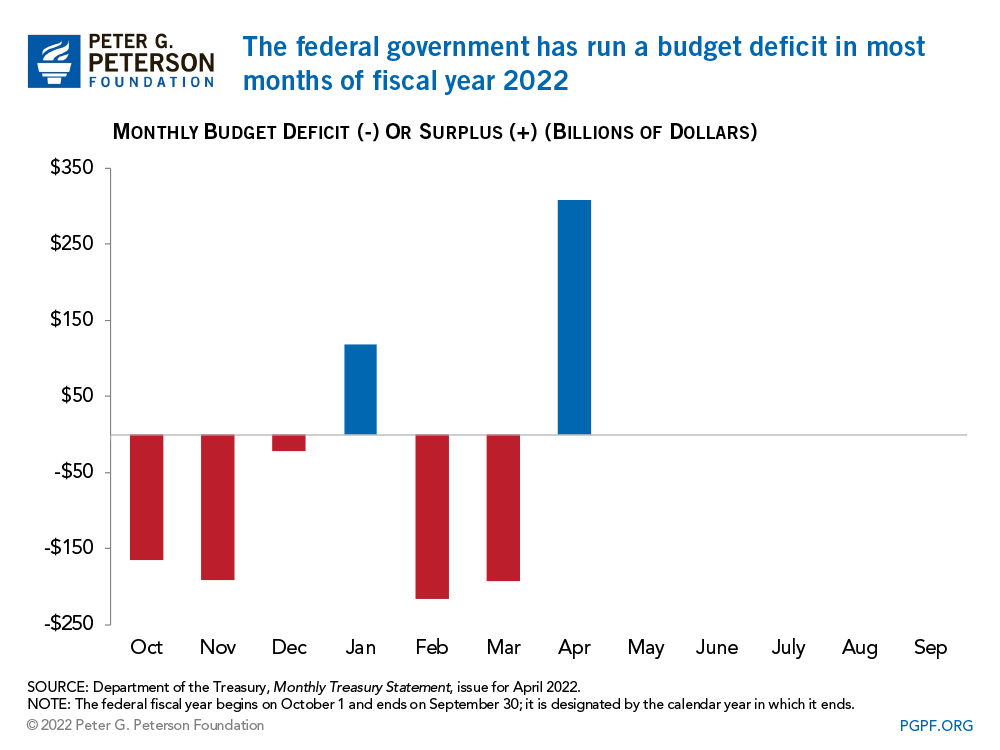
- Federal Budget Surplus for April 2022: $308 billion
- Federal Budget Deficit for April 2021: $226 billion
The federal government ran a surplus of $308 billion in April 2022, which is the largest monthly surplus ever recorded, and an improvement of $534 billion from the deficit of $226 billion that was recorded in April 2021. That substantial improvement was reflected in revenues that were $424 billion higher in April 2022 than they were in the same month last year, and outlays that were $109 billion lower. The large increase in revenues was primarily due to increased collections of nonwithheld individual income taxes – which had a final due date in April this year, as opposed to May in 2021.
Because May 1 fell on a weekend in both 2021 and 2022, certain federal payments were shifted forward into April in both years, leading to increased outlays. Without such shifts, the surplus for April 2022 would have been $373 billion and the deficit for April 2021 would have been $166 billion – or an improvement of $539 billion.
Cumulative Federal Deficit
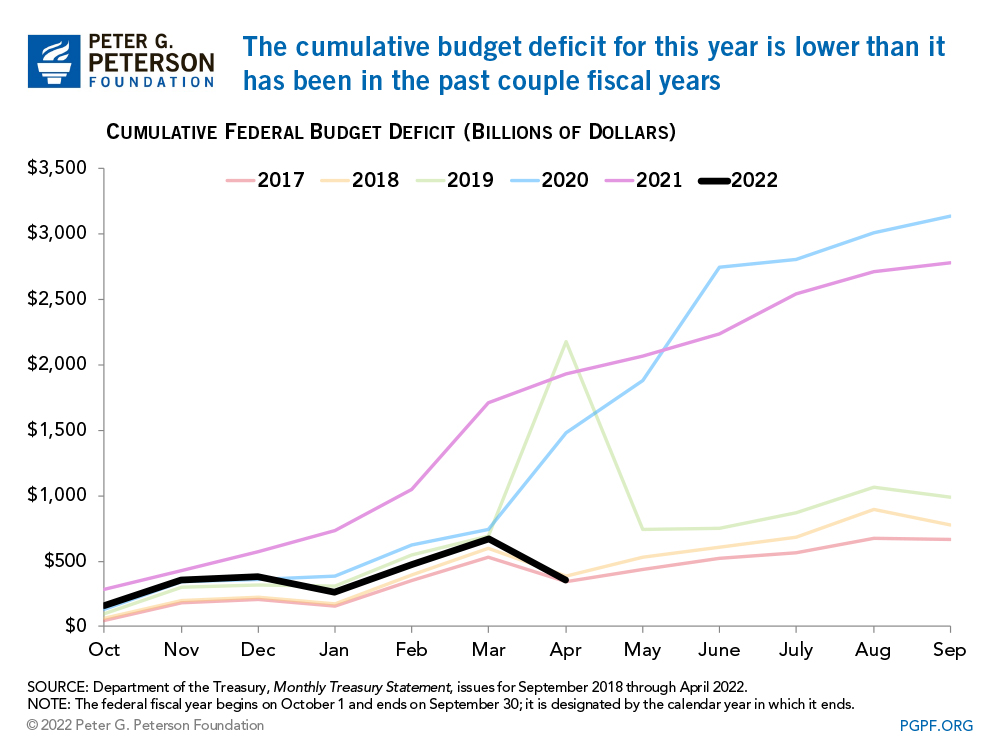
- Cumulative FY22 Deficit Through April 2022: $360 billion
- Cumulative Budget Deficit Over Same Period in FY21: $1,932 billion
The cumulative deficit for the first seven months of FY22 was $360 billion (or around 80 percent) lower than it was through the first seven months of FY21, reflecting an $843 billion increase in revenues and a $729 billion decrease in outlays.
The increase in revenues was due to stronger economic growth, leading to income growth, and in turn larger collections of individual income, payroll, and corporate income taxes. CBO notes that total revenue collections in FY22 are likely to be between $400 and $500 billion higher than what they projected in July 2021.
Meanwhile, the large decrease in outlays is due to the waning federal response to the COVID-19 pandemic. The lack of recovery rebates in the first seven months of FY22, compared to two separate rounds of such payments during the first seven months of FY21, accounts for more than half of the decline in outlays between the two years. Lower spending on unemployment compensation and programs administered by the Small Business Administration also accounted for a significant share of the difference.
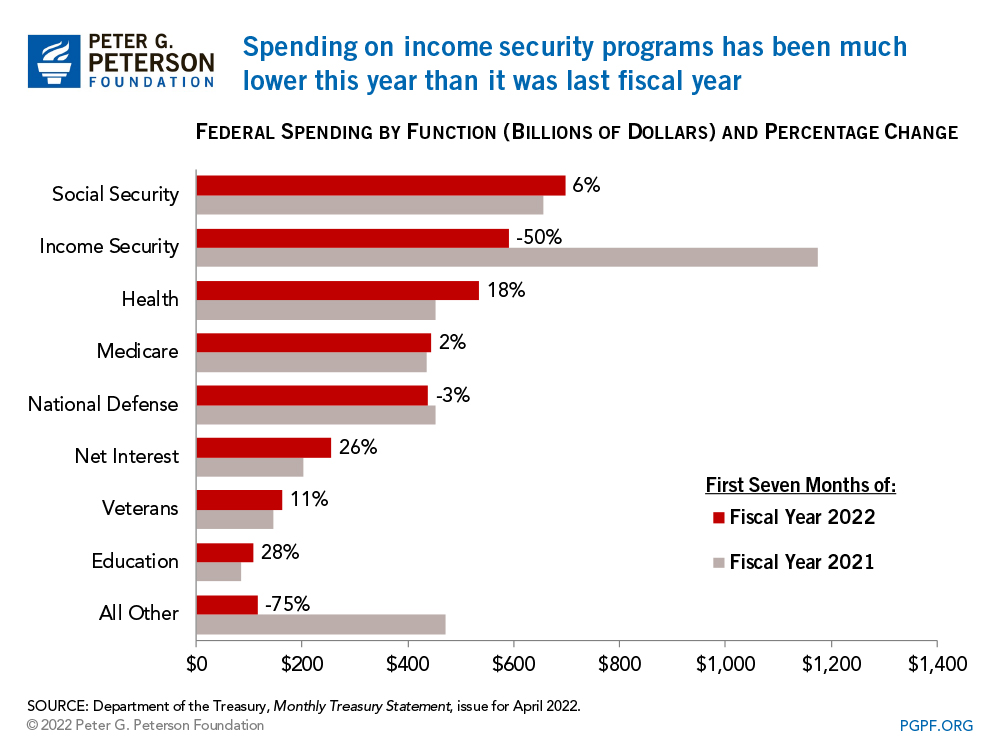
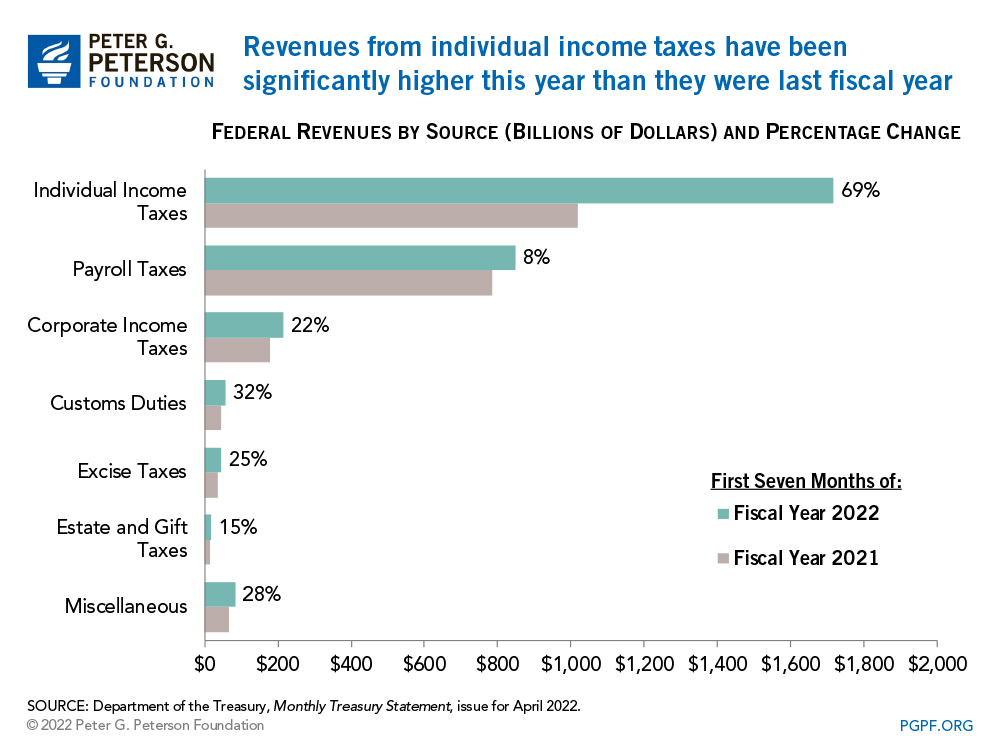
National Debt
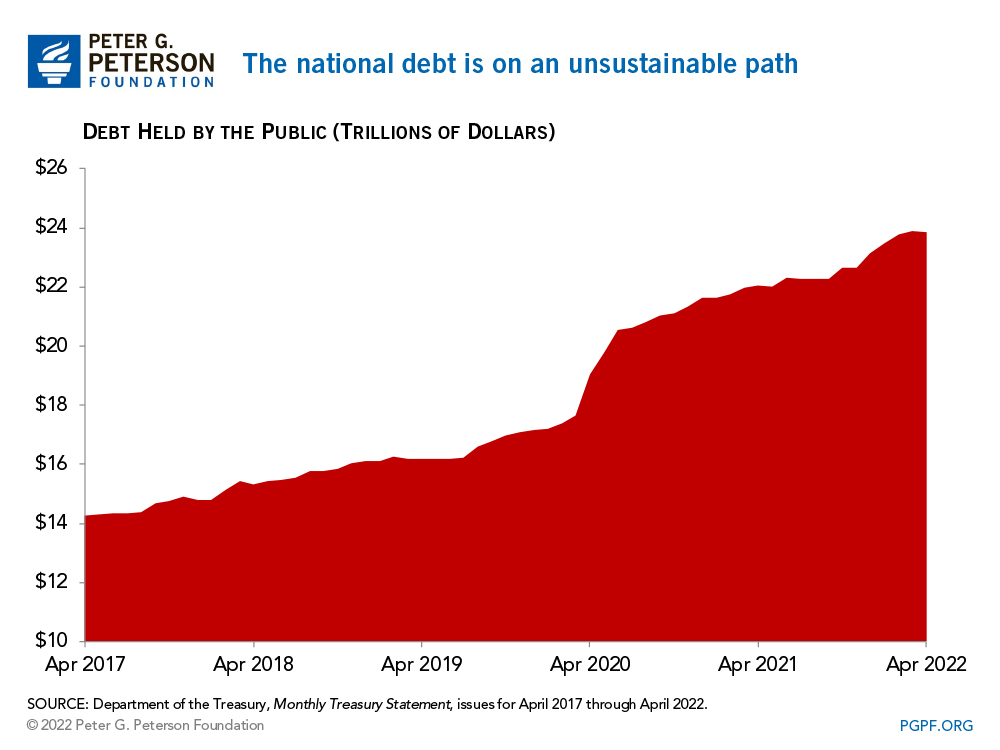
- Debt Held by the Public at the end of April 2022: $23.8 trillion
- Debt Held by the Public at the end of April 2021: $22.0 trillion
Since the onset of the COVID-19 pandemic, debt held by the public has increased by 37 percent, and is projected to grow significantly over the next 10 years. While the Biden Administration’s recent budget proposes some deficit reduction relative to the baseline, debt would still remain larger than the size of the economy. Now that the worst of the COVID-19 pandemic is behind us, it is time to chart a comprehensive path to a sustainable fiscal future.
